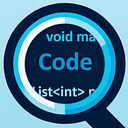Member-only story
Animating Widgets in Flutter Grids
Part III: tab transitions using Flow widget
Sometimes, you need to transition between two different kinds of grids in your app. For example, you have a grid of images and the user wants to see only the user’s favorites. Some widgets may stay the same, while others change. How can you animate this transition, making existing widgets smoothly move and resize within the grid?
Full code with all the examples is on GitHub.
In the first article of the series, we explored transitioning between different pages using the Hero widget. However, Hero widget is only triggered by push and pop actions, so it isn’t suitable using another method e.g. a TabBar.
In the second article, we transitioned between tabs using AnimatedPositioned widget. It is more complex to use, but works with TabBars and allows more fine-tuning in the animation parameters.
In this article, we will explore the Flow widget:
